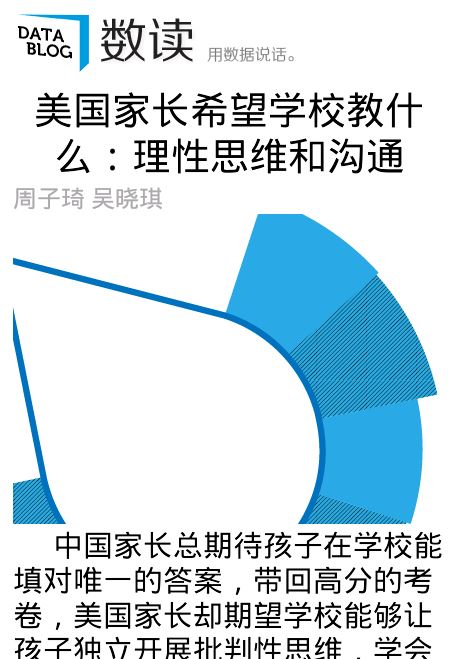Android LayoutInflater.from(context).inflate
在应用中自定义一个view,需要获取这个view的布局,需要用到
(LinearLayout) LayoutInflater.from(context).inflate(R.layout.contentitem, null);
这个方法。
一般的资料中的第二个参数会是一个null。通常情况下没有问题,但是如果我想给这个view设置一个对应的类,然后通过这个类来操作的话就会出问题。
先看下面的例子
<?xml version="1.0" encoding="utf-8"?> <LinearLayout xmlns:android="http://schemas.android.com/apk/res/android"
android:orientation="vertical"
android:layout_width="match_parent"
android:layout_height="match_parent"
android:background="@color/white"> <TextView
android:layout_width="match_parent"
android:layout_height="wrap_content"
android:id="@+id/textViewTitle"
android:textColor="@color/black"
android:gravity="center" android:textSize="26dp"/> <TextView
android:layout_width="match_parent"
android:layout_height="wrap_content"
android:id="@+id/textViewAuthor"
android:layout_gravity="left" android:textColor="@android:color/darker_gray" android:textSize="16dp"/> <ImageView
android:layout_width="wrap_content"
android:layout_height="wrap_content"
android:id="@+id/imageView"
android:layout_gravity="center_horizontal"
android:scaleType="center"/> <TextView
android:layout_width="match_parent"
android:layout_height="wrap_content"
android:id="@+id/textViewContent"
android:layout_gravity="center_horizontal" android:textColor="@color/black" android:textSize="20dp"/> <LinearLayout
android:layout_width="fill_parent"
android:layout_height="2dp"
android:layout_gravity="center"
android:background="@color/black">
</LinearLayout> <TextView
android:layout_width="match_parent"
android:layout_height="wrap_content"
android:id="@+id/textViewOtherInfo"
android:layout_gravity="left" android:clickable="true" android:textColor="@android:color/darker_gray"
android:textSize="16dp"/>
</LinearLayout>
对应的类是
public class ContentItemView extends LinearLayout {
private TextView title;
private TextView author;
private TextView content;
private TextView otherInfo;
private ImageView contentImage;
private ContentInfo info;
public ContentItemView(Context context) {
super(context);
init(context);
}
private void init(Context context) {
LinearLayout convertView =
(LinearLayout) LayoutInflater.from(context).inflate(R.layout.contentitem, null);
title = (TextView) convertView.findViewById(R.id.textViewTitle);
author = (TextView) convertView.findViewById(R.id.textViewAuthor);
content = (TextView) convertView.findViewById(R.id.textViewContent);
otherInfo = (TextView) convertView.findViewById(R.id.textViewOtherInfo);
contentImage = (ImageView) convertView.findViewById(R.id.imageView);
}
}
这个自定义view我想将它添加到一个listview中。
public void add(final ContentInfo info) {
ContentItemView contentItemView = new ContentItemView(context);
contentItemView.setContentInfo(info);
contentItemView.setLayoutParams(new AbsListView.LayoutParams(AbsListView.LayoutParams.MATCH_PARENT, AbsListView.LayoutParams.WRAP_CONTENT));
data.add(contentItemView);
}
@Override
public View getView(int position, View convertView, ViewGroup parent) {
return data.get(position);
}
程序运行起来以后,没有任何问题,但是界面没有显示出来,仅仅是在listview中多了一系列黑色的条条

如果将
(LinearLayout) LayoutInflater.from(context).inflate(R.layout.contentitem, null);
修改为
(LinearLayout) LayoutInflater.from(context).inflate(R.layout.contentitem, this);
显示就会正常

上面的东西很多资料里面都有,但是原因是什么?我在网络上找了很久都没有找到,于是就自己研究了下代码
public View inflate(int resource, ViewGroup root) {
return inflate(resource, root, root != null);
}
public View inflate(int resource, ViewGroup root, boolean attachToRoot) {
if (DEBUG) System.out.println("INFLATING from resource: " + resource);
XmlResourceParser parser = getContext().getResources().getLayout(resource);
try {
return inflate(parser, root, attachToRoot);
} finally {
parser.close();
}
}
public View inflate(XmlPullParser parser, ViewGroup root, boolean attachToRoot) {
........
if (TAG_MERGE.equals(name)) {
if (root == null || !attachToRoot) {
throw new InflateException("<merge /> can be used only with a valid "
+ "ViewGroup root and attachToRoot=true");
}
rInflate(parser, root, attrs, false);
} else {
// Temp is the root view that was found in the xml
View temp;
if (TAG_1995.equals(name)) {
temp = new BlinkLayout(mContext, attrs);
} else {
temp = createViewFromTag(root, name, attrs);
}
ViewGroup.LayoutParams params = null;
if (root != null) {
if (DEBUG) {
System.out.println("Creating params from root: " +
root);
}
// Create layout params that match root, if supplied
params = root.generateLayoutParams(attrs);
if (!attachToRoot) {
// Set the layout params for temp if we are not
// attaching. (If we are, we use addView, below)
temp.setLayoutParams(params);
}
}
..............
if (root != null && attachToRoot) {
root.addView(temp, params);
}
// Decide whether to return the root that was passed in or the
// top view found in xml.
if (root == null || !attachToRoot) {
result = temp;
}
}
.....
}
可以看到在inflate(XmlPullParser parser, ViewGroup root, boolean attachToRoot)函数中,只有root不等于空的情况下才能够真正的把view添加到listview中。
看看参数root的含义:@param root Optional view to be the parent of the generated hierarchy
就是说这个表示的事view的容器是什么。如果不告诉SDK你要把这个view放到哪里,当然就不能生成view了。
Android LayoutInflater.from(context).inflate的更多相关文章
- android中LayoutInflater.from(context).inflate的分析
在应用中自定义一个view,需要获取这个view的布局,需要用到 (LinearLayout) LayoutInflater.from(context).inflate(R.layout.conten ...
- android LayoutInflater.inflate()的参数介绍
LayoutInflater.inflate()的作用就是将一个xml定义的布局文件实例化为view控件对象: 与findViewById区别: LayoutInflater.inflate是加载一个 ...
- android LayoutInflater和inflate()方法的用法(转载)
原文出处:http://www.cnblogs.com/top5/archive/2012/05/04/2482328.html 在实际开发中LayoutInflater这个类还是非常有用的,它的作用 ...
- Android LayoutInflater.inflate使用上的问题解惑
最近在在使用LayoutInflater.inflate方法时遇到了一些问题,以前没有仔细看过此类的使用方法,故将其记录下来,方便日后查阅. 相信大家都知道LayoutInflater.inflate ...
- Android LayoutInflater.inflate(int resource, ViewGroup root, boolean attachToRoot)的参数理解
方法inflate(int resource, ViewGroup root, boolean attachToRoot) 中 第一个参数传入布局的资源ID,生成fragment视图,第二个参数是视图 ...
- Android LayoutInflater详解
在实际开发中LayoutInflater这个类还是非常有用的,它的作用类似于findViewById().不同点是LayoutInflater是用来找res/layout/下的xml布局文件,并且 ...
- 转载《Android LayoutInflater详解》
在实际开发中LayoutInflater这个类还是非常有用的,它的作用类似于findViewById().不同点是LayoutInflater是用来找res/layout/下的xml布局文件,并且实例 ...
- Android LayoutInflater原理分析,带你一步步深入了解View(一)
转载请注明出处:http://blog.csdn.net/guolin_blog/article/details/12921889 有不少朋友跟我反应,都希望我可以写一篇关于View的文章,讲一讲Vi ...
- Android LayoutInflater详解(转)
在实际开发中LayoutInflater这个类还是非常有用的,它的作用类似于findViewById().不同点是LayoutInflater是用来找res/layout/下的xml布局文件,并且实例 ...
随机推荐
- 社区发现算法问题&&NetworkX&&Gephi
在做东西的时候用到了社区发现,因此了解了一下有关社区发现的一些问题 1,社区发现算法 (1)SCAN:一种基于密度的社团发现算法 Paper: <SCAN: A Structural Clust ...
- uWSGI uwsgi_response_write_body_do(): Connection reset by peer 报错的解决方法
服务器架构是:Nginx+uWSGI+Django 某一天,发现服务器返回的response不完整,例如文档大小是200K的,但是只返回了100K给浏览器. 查了一下uWSGI的日志,发现以下错误: ...
- oracle 11g rac 修改字符集
系统版本: Oracle Linux Server release 5.7 数据库版本: Oracle Database 11g Enterprise Edition Release 11.2.0.3 ...
- 深入PHP EOF(heredoc)用法详解
介绍下使用EOF heredoc方式,输出长段内容的方法, <?php $name = '姓名'; print <<<EOT <html> <head> ...
- Careercup - Facebook面试题 - 5733320654585856
2014-05-02 09:59 题目链接 原题: Group Anagrams input = ["star, astr, car, rac, st"] output = [[& ...
- MySQL数据库错误server_errno=2013的解决
MySQL数据库错误server_errno=2013的解决 一组MySQL复制环境中的Master意外掉电,重启后Master运行正常,但该复制环境中的其它slave端,Error Log中却抛出的 ...
- css3 怎么实现像书籍装订线的效果
.test{ width: 150px; height: 150px; margin: 20% auto; background-color: white; background-image: rep ...
- jquery ajax对特殊字符进行转义防止js注入使用示例
在使用ajax进行留言的时候,出现了一个问题.因为留言内容写完之后,通过ajax提交内容,同时使用js把留言的内容添加到页面上来.浏览留言的时候也是通过ajax请求,然后再显示的.这样,如果有人在留言 ...
- Chrome浏览器下调试SASS
网上说的方案各有各的说法,尝试多个才找到有效方案,为避免后来者麻烦,现在讲讲如何调试 笔者ruby版本为3.4.19,因为sass文件的编译是需要ruby环境的,使用sass前需要先安装! 第一步(核 ...
- [设计模式] 13 责任链模式 Chain of Responsibility
转 http://blog.csdn.net/wuzhekai1985 http://www.jellythink.com/archives/878 向项目经理提交了休假申请,我的项目经理向 ...
